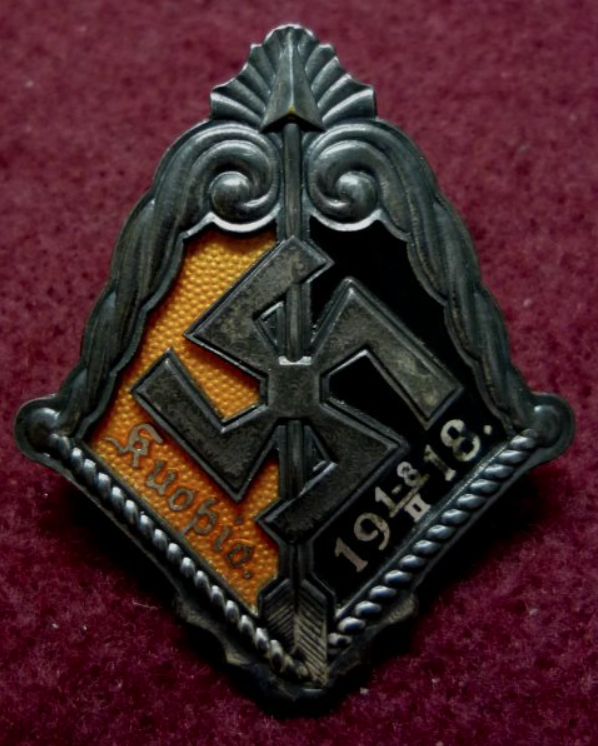
What if Mannerheim had crossed the Rubicon? Thread on the planned 1919 Finnish right-wing coup and Petrograd offensive. 1/19 

After the failure of Finnish monarchy, Mannerheim was named the regent of Finland while a new Republican constitution was being drafted. Finland still struggled to gain the recognition of its independence and ambitious foreign policy goals were abandoned. 2 

This clashed with the goals of the monarchist and nationalist activists who wanted Finland to achieve its geopolitical destiny. The most important question at hand was the future of Petrograd. A war-party began to form around Mannerheim. 3 



As a former officer of the Czar, Mannerheim dreamed of capturing Petrograd. He believed that Finland could build good relations with the White Russians if it helped them destroy Bolshevism. However, this idea was opposed by the parliament. 4 



On the 30th March, Finnish activists organized a terror campaign in Petrograd to cause chaos in the city. Several bombs exploded at electric plants and waterworks and fires were started. The damages were considerable but no further bomb attacks were ordered. 5 



In May and June, there were numerous clashes on the Karelian Isthmus between the Finnish Army and Bolsheviks, with exchanges of artillery fire. Activists used these incidents and rumors of a new communist revolution in their propaganda to pressure the political leadership. 6 





In June, The Finnish High Command had completed its mobilization plan and had planned the capture of Petrograd down to every street. The White Russians made appeals towards the Finns but they were rejected because the Kolchak government didn’t recognize Finnish independence. 7
In July, Mannerheim negotiated privately with Russian General Yudenich and agreed on the conditions of their alliance. These included: giving Petrograd to Russians, recognition of Finnish independence and autonomy for East Karelia and Ingria. 8 



Time was running out. The moderate government would not agree on the Petrograd offensive and Mannerheims term as regent would end in on the 25th of July. Mannerheim met up with the activists and planned the following coup: 9 

Mannerheim would delay the ratification of the constitution, dissolve the government and create a new one which was sympathetic to his aims, cancel the presidential election, then a state of war would be declared and the Petrograd offensive would begin in a few days. 10
This formation of the government rested on the National Coalition party. However, the activists could not gather enough support in their politicians and Mannerheim made his decision not to go through with the coup and ratified the Republican Constitution. 11 

Mannerheim would lose the following Presidential election to K.J. Stålberg who was supported by the moderates, socialists and republicans in the parliament. Afterwards, the war-party still entertained some ideas of a coup but they had already lost their chance. 12 

Ståhlberg was inexperienced and cautious in his foreign policy. He allowed the British navy to operate from Finland against the Soviets but put down any plans to take Petrograd when the issue became topical again. 13 

Yudenich’s White Russian forces would make their final attempt to capture Petrograd without Finnish help in October. They managed to reach the outskirts of the city but were pushed back when the Reds managed to pull in reinforcements. 14 





It is possible that the capture of Petrograd would have succeeded, if it had been done together with the Finnish forces in the spring of 1919, when the Red Army had less troops to defend their capital and when the Soviet rule was less established. 15 

However, it is debatable, whether the defeat of Soviets would have really helped the situation of Finland and Estonia. Yudenich and other white generals gave them promises of independence, but it's unlikely the Kolchak government would have fulfilled them. 16 

The White Russian government was resolute about restoring the old borders of the Empire and was against all separatism. It is possible the Finnic states would have ended up in a war against White Russia, if they allowed its existence. 17 

Although Mannerheim and the activists had been unanimous in the idea of capturing Petrograd, they disagreed profoundly on the end goal. The activists had wanted the city either turned into a Free City or sunk to the sea, something which did not fit Mannerheim’s plan. 18 



In the end, some activists and supporters of the Republican constitution started to question Mannerheim’s loyalty and began to believe that Soviet Russia would in fact be a more co-operative neighbor than White Russia. 19/19 



• • •
Missing some Tweet in this thread? You can try to
force a refresh































